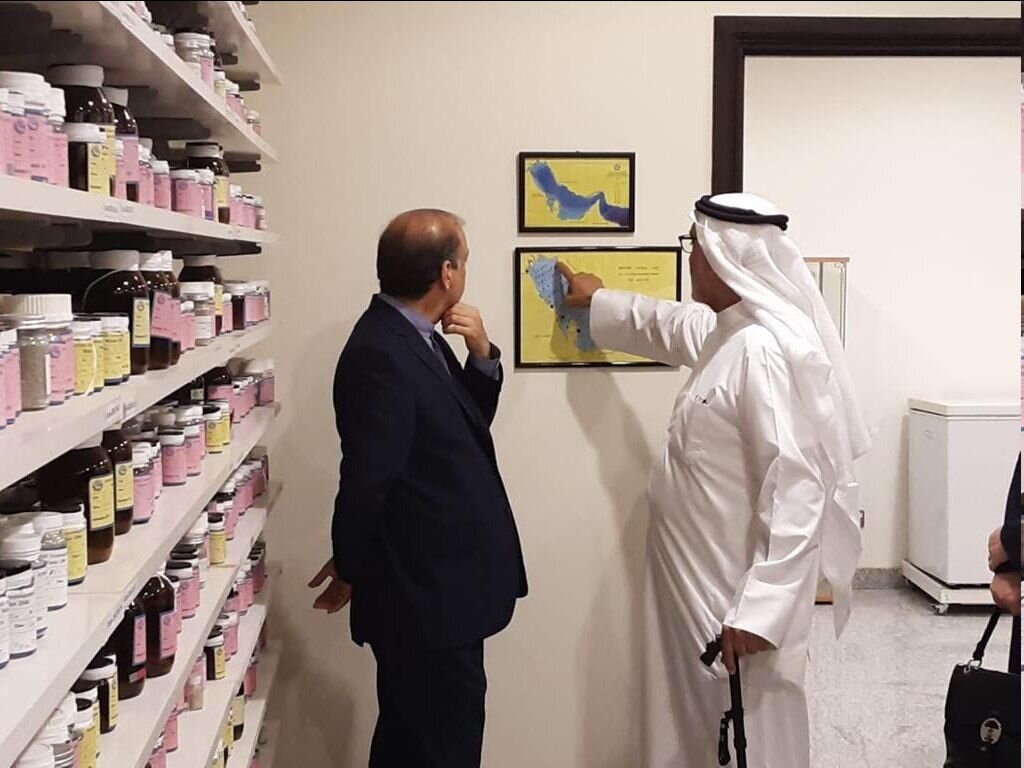ROPME appreciates Iran for combating environmental pollution in Persian Gulf

TEHRAN- Jassem Al Beshara, the executive director of the Regional Organization for the Protection of the Marine Environment (ROPME), has expressed gratitude to Iran for its effort to fight against environmental pollution, particularly in the Persian Gulf.
In a meeting on Thursday with Mohammad Toutounchi, the Iranian ambassador to Kuwait, Al Beshara said: “The Persian Gulf is a source of wealth to all countries in the region, and we should all work together to preserve it.”
Moreover, he announced the compilation of a five-year strategic plan with the presence of a delegation from Iran in the last week of the upcoming September, in Kuwait.
Toutounchi, for his part, talked about the negative effects of pollutants, including dust storms, on regional countries' economies, agriculture, transportation, and the environment.
During the meeting, Toutounchi invited Al Beshara to take part in the international conference on combating sand and dust storms which is scheduled to be held in Tehran on September 9-10.
Toutounchi also said: “Sand and dust storms have become a troublesome issue for all countries in the region.
The management of the sources of sand and dust storms requires a coherent and scientific program, which is going to be proposed in the forthcoming Tehran conference.”
MOU to combat SDSs in 2022
In July 2022, Iran and Kuwait inked a memorandum of understanding (MOU) to cooperate on mitigating sand and dust storms in the region, IRNA reported.
Heading a technical-diplomatic delegation, Iran’s Department of Environment Chief, Ali Salajeqeh traveled to Kuwait City to negotiate for immediate implementation of an agreement on SDSs mitigation.
In his meeting with high-ranking Kuwaiti officials, Salajeqeh underlined the importance of joint cooperation against dust storms and the implementation of regional action plans.
The MOU included arranging joint seminars and conferences, exchanging technicians and scientists specializing in the fight against dust storms, establishing a special workgroup, sharing scientific achievements in the field, management of the campaign, and sharing experiences of the international organizations in this field, and timely warning system before the occurrence of dust storms.
SDS effects
The SDSs phenomenon has been plaguing the country for several years and has caused problems in many provinces. According to experts, natural and human factors are involved in the occurrence and severity of this phenomenon which is mainly caused by excessive consumption of water and drying up reservoirs.
Over the recent years, the precipitation rate has been on a downward trend, as a result, sources of sand and dust storms have increased compared to a year before, Ahad Vazifeh, head of the national center for drought and crisis management, said.
Declining water levels in dams and lakes mean that water available to humans has been reduced and the dust-raising areas have been increased, he lamented, ISNA reported.
The internal dust sources are estimated at 34.6 million hectares, generating an average amount of 4.22 million tons of dust per year, about 1.460 million hectares are dried wetlands.
But, all the SDSs sources are not located in Iran, 300 million hectares in the neighboring countries are giving rise to SDSs, which transport dust into Iran. The total dust density is estimated at about 150 million tons.
In fact, the dust is raised from Turkmenistan, Uzbekistan, Afghanistan, and Pakistan in the northeast as well as Iraq, Syria, Saudi Arabia, and Jordan in the south, southwest, and west.
Letizia Rossano, the director of the Asian and Pacific Centre for the Development of Disaster Information Management (APDIM), said in June that Iran is really at forefront of understanding the problem of sand and dust storms as well as dealing with it.
MT/MG
Leave a Comment